How do you count how many people attend a Pride parade? The Vancouver Pride Society has claimed since 2011 that 650,000 people come to watch the parade every year. I wanted to test that assertion, so I headed to the 2015 Pride parade armed with a camera. Using photographs, maps and a little math, I came up with my own estimate. Here’s how I did it.
First, here’s the Vancouver Pride Society’s map of the route:
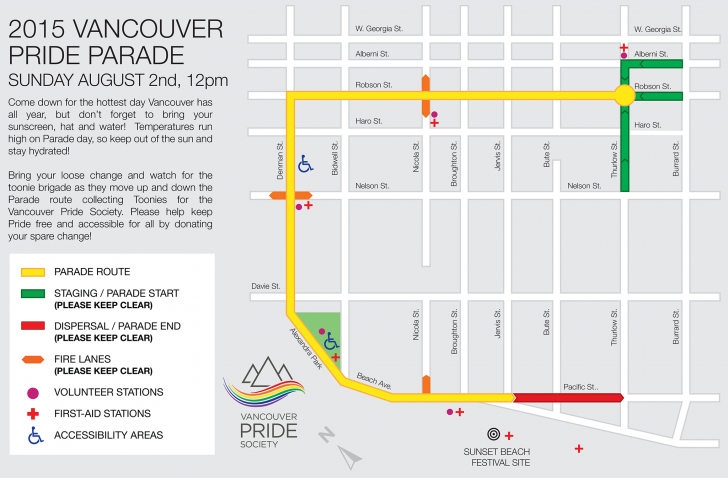
Google Maps tells us that the main parade route from Thurlow Street down Robson Street, south along Denman Street then along Pacific Street is three kilometres long. The staging area, in green, is 850 metres.
My first strategy was to follow the Aug 2, 2015, parade down the entire route, taking photographs the whole way. I stayed roughly in line with the front of the parade. The fixed angle of my lens and the fixed distance across the street ensured that each photograph covers about 10 metres of sidewalk. For example, here’s a photo taken in front of the Blue Horizon Hotel on Robson Street:
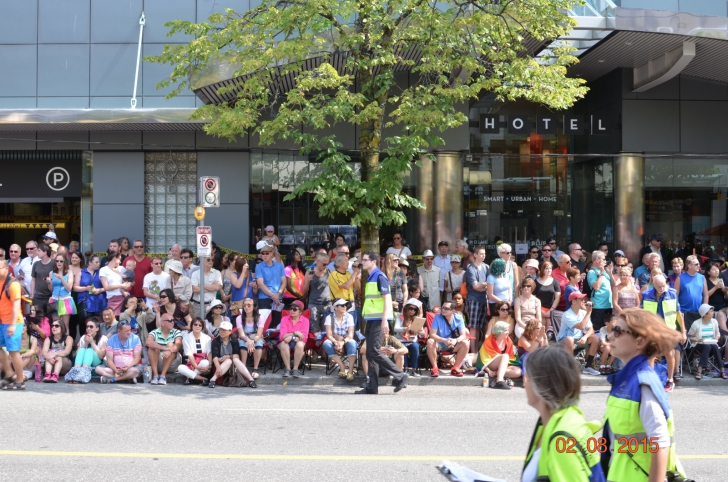
To double-check the width, here is the same area in a Google Maps satellite photo (note the picture covers from the centre of the front door awning to the beginning of the car park):
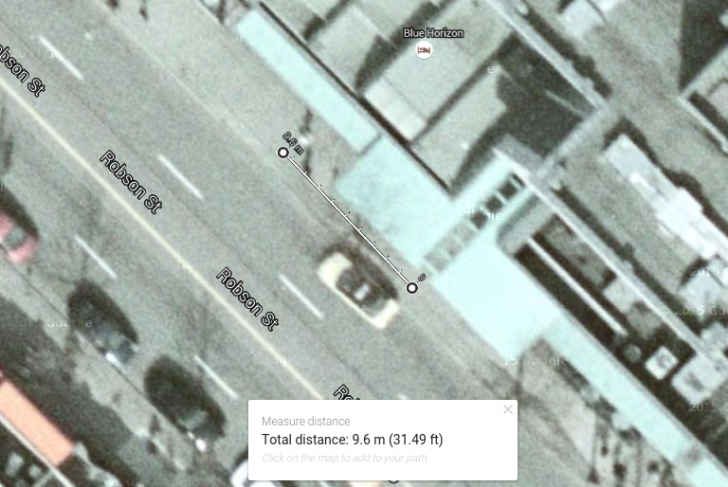
In each photograph, I counted every visible head. As you can see in the picture above, it’s easy to see from the front to the back of the crowd. In the above picture, I counted 109 heads (including the baby).
The most dense photograph I took was at the corner of Bute and Robson Street, where I counted 141 people in 10 metres:
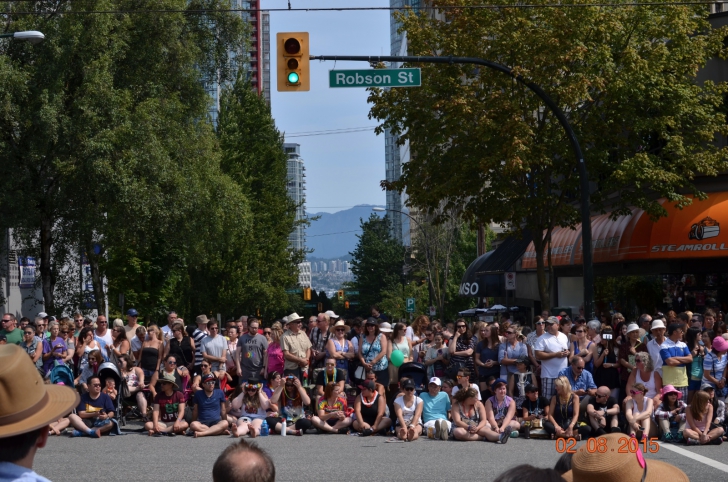
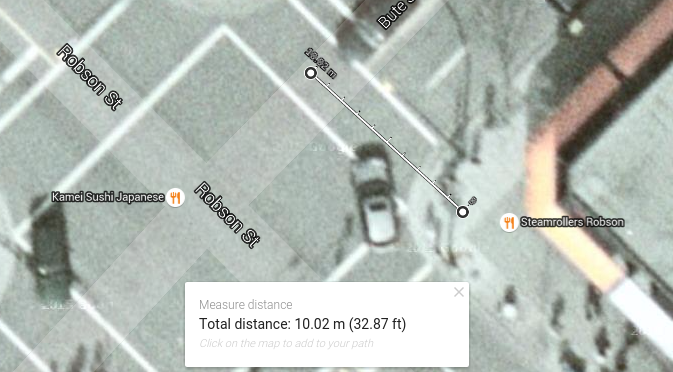
The least dense photograph was in front of Tango’s Gourmet Meats on Denman Street, where the crowd thinned out to only 21 people over 10 metres.

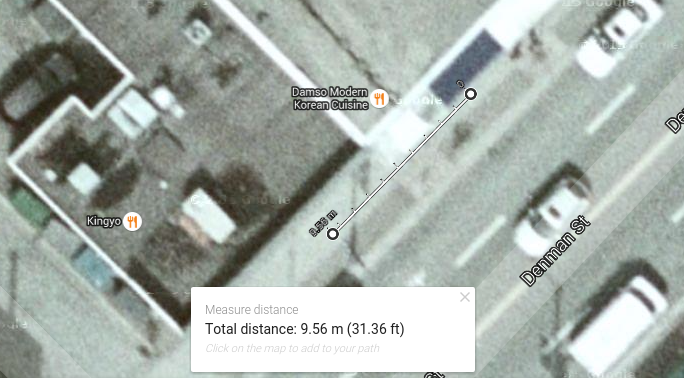
After reviewing and counting all of my photos, and picking out the clearest shots every block, the route looked like this:
Robson Tim Hortons: 76 people
Blue Horizon Hotel: 108
Robson Blenz: 131
Robson and Bute: 141
Shenanigans: 109
Hon’s: 89
Capstone: 71
Robson Internet Cafe: 36
Wonho Hair Salon: 40
Jang Mojib: 53
Zabu Chicken: 54
Rougemont: 44
Green Panda: 34
La Casita: 39
Robson turning onto Denman: 63
Spot Cafe: 66
Tango’s: 21
Magic Dollar: 24
HUB: 33
Pizzalita: 35
Denman onto Beach: 48
Beach around Cardero: 58
Beach around Nicola: 54
Beach around Broughton: 23
Pacific near Thurlow: 32
To avoid trying to measure block by block, we can simplify these results into a few sections. From the beginning of the parade to Shenanigans, the crowd was reasonably dense, averaging 113 people every 10 metres. I wasn’t able to see the whole staging area at the beginning of the parade due to the fencing blocking my movement, but we can give the parade the benefit of the doubt and say that the whole staging area was likely similarly dense. That gives us an 850-metre staging area and 300 metres of Denman street at 11.3 people/metre.
The crowd thins out after that, but stays solid all the way up until The Spot Cafe near the corner of Robson and Denman, averaging 54 people per 10 metres (5.4 people per metre) for the final 800 metres of Robson Street.
Things get pretty thin on Denman Street, averaging only 2.8 people/metre for the 800 metres down to Beach Ave. The final 1200-metre stretch down Beach and Pacific Street picks up slightly, averaging 4.3 people/metre. There was also one anomalous lump of bystanders at the bend between Beach and Pacific, shown below.
This photo shows 160 people, though it’s harder tell if it’s exactly 10 metres. We’ll substitute that 100-metre block at 16.0 people/metre to give the benefit of the doubt.
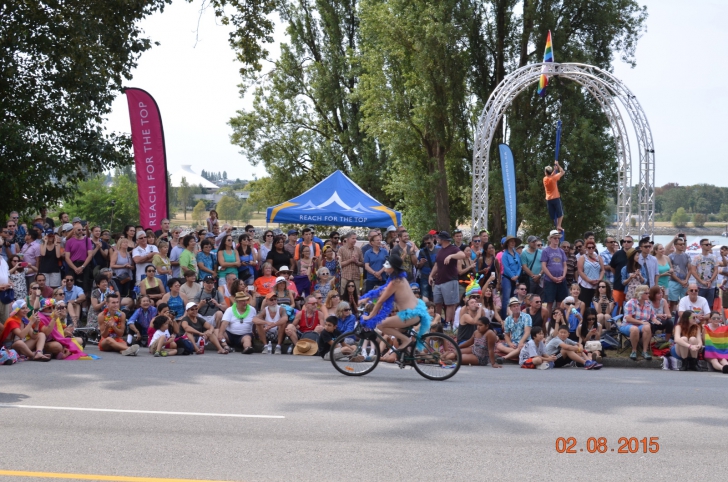
Finally, we have to remember that there are two sidewalks to every street, so we have to double all of our distances. Therefore, we end up with:
(850 + 300) x 11.3 x 2 = 25,990
800 x 5.4 x 2 = 8,640
800 x 2.8 x 2 = 4,480
1100 x 4.3 x 2 = 9,460
100 x 16 x 2 = 3,200
Total = 51,770
But we’re not done yet. There are a couple of factors we haven’t considered:
1. What about Sunset Beach Park?
2. What about people in buildings?
3. What about people joining and leaving the crowd?
Sunset Beach:
At the end of the parade route, Sunset Beach Park is set up as a fairground. Later in the parade, the park fills up considerably. It’s impossible for me to tell how many people in the park came directly from the parade, so we’ll have to once again give Pride the benefit of the doubt and count the park separately. Once again, let’s do this with a photograph.
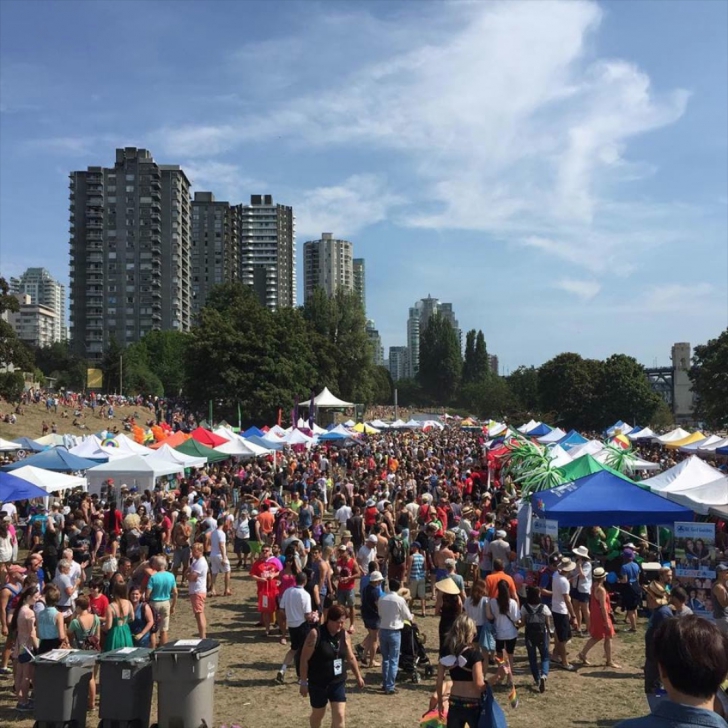
This photo, posted by Vancouver Pride Society president Tim Richards to Instagram on Aug 2, 2015, shows about one quarter of the area of the Sunset Beach Park fairground. Four hundred people are visible in this photo. (I learned from the scientific literature during this assignment that the best way to count people in a photo is to place a dot over each head as you count.) It’s reasonable to think, however, that at least half of the people in this field of view are hidden by awnings. We might generously estimate, then, that there were about 4,000 people in the entire fairground.
Buildings:
While I imagined that there would be a large number of people hanging out of windows along the parade route, I was only able to catch sight of a few dozen. There were, however, quite a few people sitting in cafes and restaurants along the route. In the first 400 metres of Robson Street, for example, there were 14 restaurants and cafes. I counted a few people through the windows, and came up with an average of about 15 people watching through the windows. At the rate of 14 eateries per 400 metres and 15 watchers per eatery, that approximately gives us an additional 1,600 people.
Crowd Movement:
It’s possible that some people joined the parade after it had started, swelling the numbers after I had already passed. I kept an eye out for how many people were coming down side streets. Mostly, however, I saw things like this.
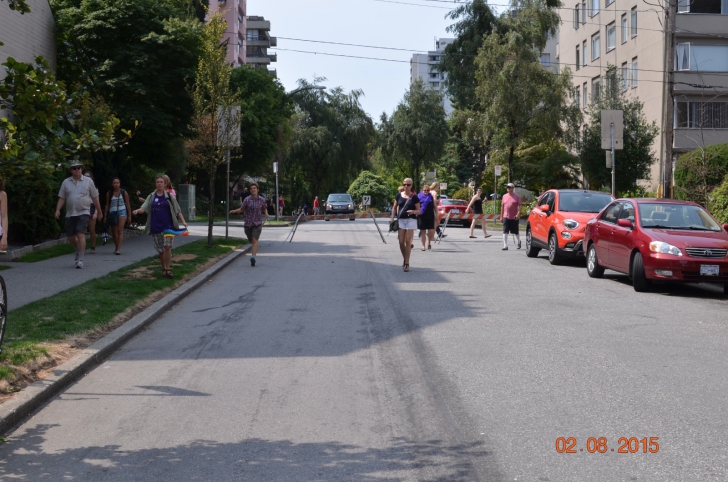
Or sometimes even this:
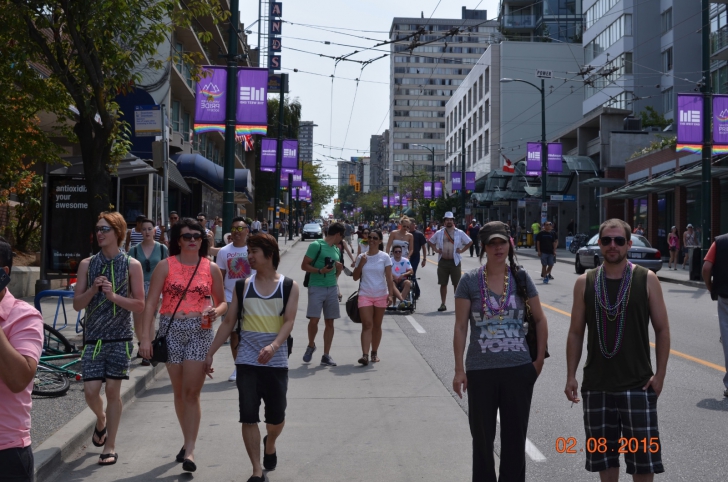
If a similar number of latecomers (an average of about 10) arrived down every open side street (about 40) along the route every minute for the first half hour of the parade, that would swell the ranks by about 12,000.
***
To sum up, extraneous factors are difficult to measure, but would at the very most add on an additional 18,000 viewers to the parade, bringing our grand total up to nearly 70,000.
That number is so small compared to the Vancouver Pride Society’s claims — nearly a tenth the size — that I wanted to find a whole other way to verify my answer. For help, I went to this paper by Hong Kong sociologist Paul Yip and Australian statistician Ray Watson, who studied the history of crowd counting, and why so many people get it wrong. (I also asked Yip to look over my work to make sure I wasn’t flubbing).
Yip and Watson suggest using a formula developed in the 1960s while counting Vietnam War protests at Berkeley University in California, when a researcher discovered that a dense crowd contains about two people per square metre, and a loose crowd contains about one person per square metre. Watson and Yip further suggest that a “mosh pit”-like crowd contains up to four people per square metre.
We can use this formula to take another run at the Vancouver Pride problem, knowing that the sidewalks along the parade route measure about four metres. We’ll estimate the crowd density over the same distances, and multiply it by the area, remembering to double the sidewalk width to cover both sides of the street.
Distance x width x density = people
(850 + 300) x 8 x 4 = 36,800
800 x 8 x 2 = 12,800
800 x 8 x 1 = 6,400
1100 x 8 x 1 = 8,800
100 x 8 x 4 = 3,200
Total = 68,000
In addition, the vendor village and the bar area in Sunset Beach Park measured a total of about 10,000 square metres, which at a light crowd would add another 10,000 people.
A fresh way to look at the problem of crowd movement might be to imagine two sidewalks (8 metres wide) with a light crowd (1 person/square metre) walking at a slow shuffle (1 kilometre/hour) down the parade route. At that rate, 8,000 people would have joined the parade in an hour. Including our previous estimations of restaurant watchers (1,600), that brings us up to 87,600 people.
In summary, counting crowds is difficult, messy and unpredictable. My photography model suggested almost 70,000 people, but may have underestimated the density of the crowd in the staging areas of the parade. Watson and Yip’s model suggested about 90,000 people, but probably overestimated the density of many parts of the route. Likely, the answer is somewhere in between, in the environs of 80,000 people.
As a final note, while my methods could certainly use refinement, it’s hard to imagine how one could bend them so far as to come up with 650,000 people.
Pack people in more tightly? For 650,000 people to fit onto the sidewalks along the parade route, 21 people would have to fit into an area the size of a hula hoop.
Cycle people through the parade route? Five thousand people would have to join and leave the parade every single minute for two hours to make up the difference, the equivalent of a steady stream of joggers the width of Robson Street pouring into the parade non-stop.
No, there were not 650,000 people at the 2015 Pride Parade. Not even close.
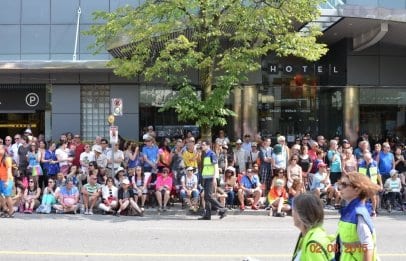
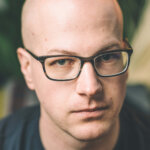
 Why you can trust Xtra
Why you can trust Xtra


